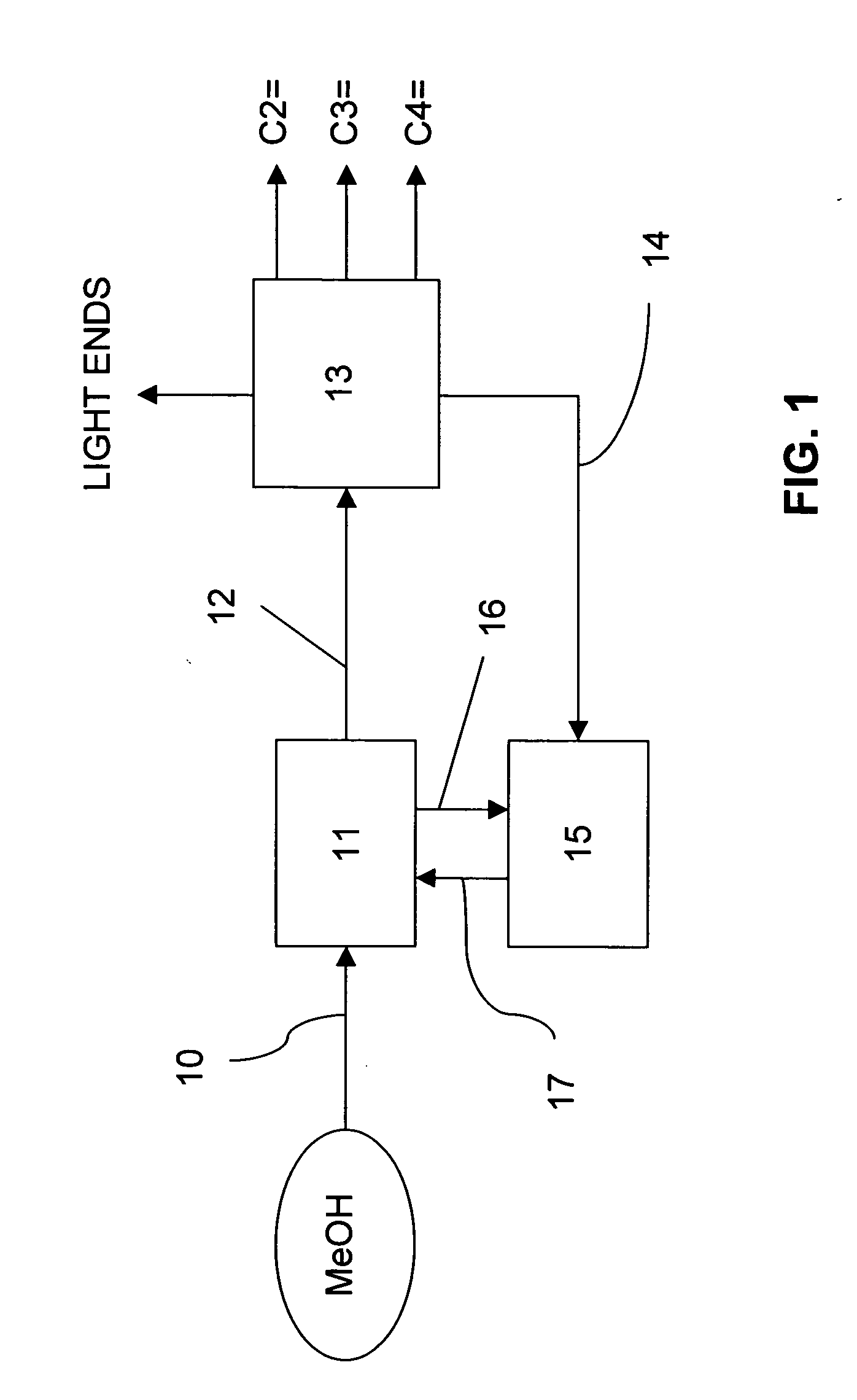Catalyst pretreatment with aldehyde in an oxygenate to olefins reaction system
a technology of oxygenate and reaction system, applied in the field of catalyst pretreatment with aldehyde in an oxygenate to olefins reaction system, can solve the problem of loss of catalyst sites
- Summary
- Abstract
- Description
- Claims
- Application Information
AI Technical Summary
Benefits of technology
Problems solved by technology
Method used
Image
Examples
example 1
[0118] A mixture of 95 mg of formulated SAPO-34 catalyst and 1 g of 100-μm silicon carbide was loaded into a microflow reactor made of ¼″ silicon steel tubing and equipped with a vaporizer for vaporizing the feed to the reactor. The reactor temperature was increased to 300° C. while the catalyst was under helium flow (24 ml / min), and held for ca. 30 to 40 minutes for the temperature to stabilize.
[0119] The catalyst was pretreated by flowing 1 g acetaldehyde per gram of molecular sieve in the formulated catalyst through the reactor at 25 psig and at a WHSV of 88 hr−1. After the flow of acetaldehyde was stopped, 48 ml / min of helium was flowed through the reactor while the temperature was increased to 475° C. The flow was continued for about 45 minutes for the temperature to stabilize.
[0120] After the temperature was stabilized, methanol was injected for 6 to 10 minutes at 25 psig and at a WHSV of 100 hr−1. Effluent was collected using a 16-loop Valco valve. The effluent was analyzed...
example 2
[0121] The procedure of Example 1 was repeated, except that the catalyst was pretreated at a reactor temperature of 350° C. The results are shown in Table 1.
example 3
[0122] The procedure of Example 1 was repeated, except that the catalyst was pretreated at a reactor temperature of 400° C. The results are shown in Table 1.
PUM
| Property | Measurement | Unit |
|---|---|---|
| Temperature | aaaaa | aaaaa |
| Temperature | aaaaa | aaaaa |
| Temperature | aaaaa | aaaaa |
Abstract
Description
Claims
Application Information
 Login to View More
Login to View More - R&D
- Intellectual Property
- Life Sciences
- Materials
- Tech Scout
- Unparalleled Data Quality
- Higher Quality Content
- 60% Fewer Hallucinations
Browse by: Latest US Patents, China's latest patents, Technical Efficacy Thesaurus, Application Domain, Technology Topic, Popular Technical Reports.
© 2025 PatSnap. All rights reserved.Legal|Privacy policy|Modern Slavery Act Transparency Statement|Sitemap|About US| Contact US: help@patsnap.com


